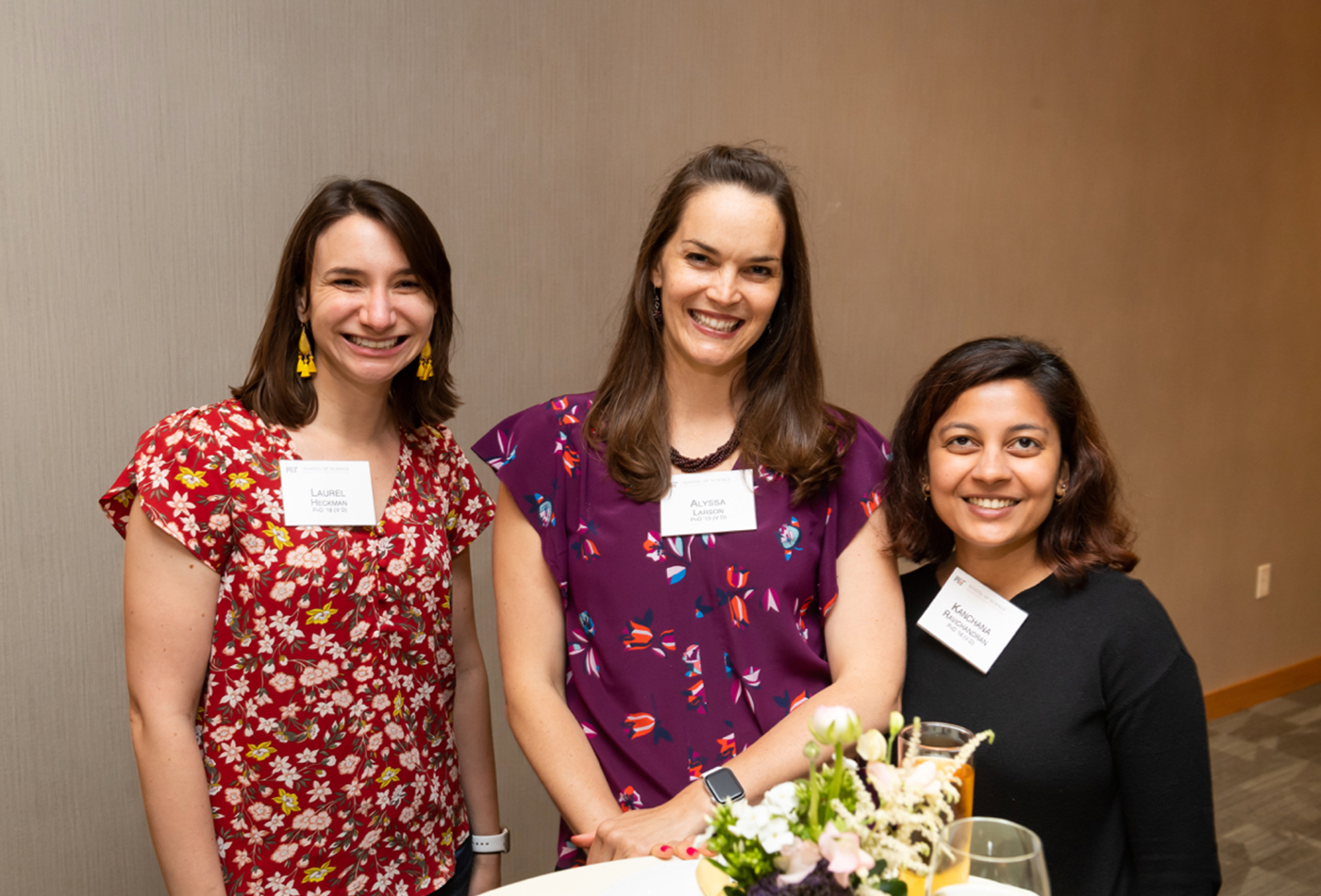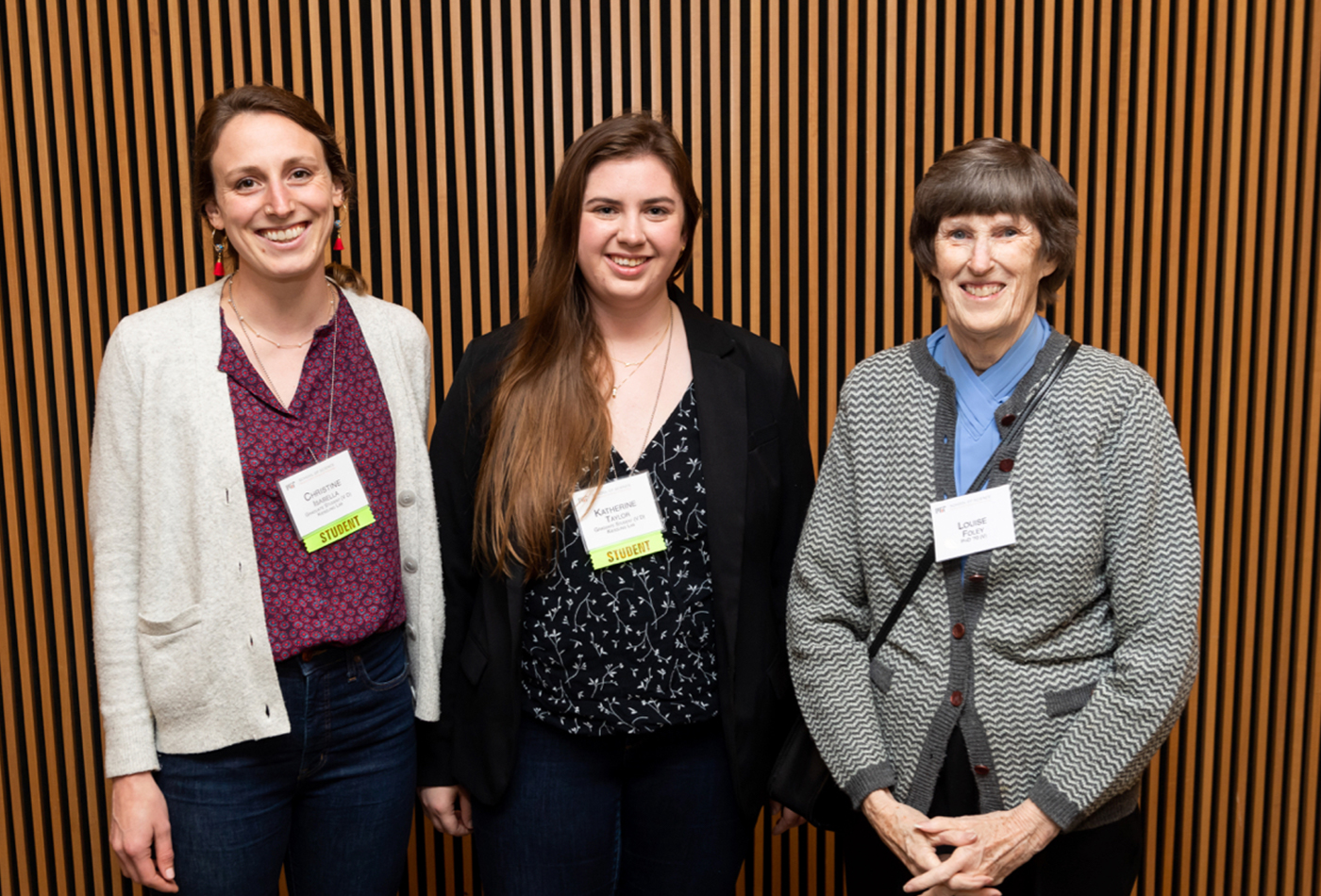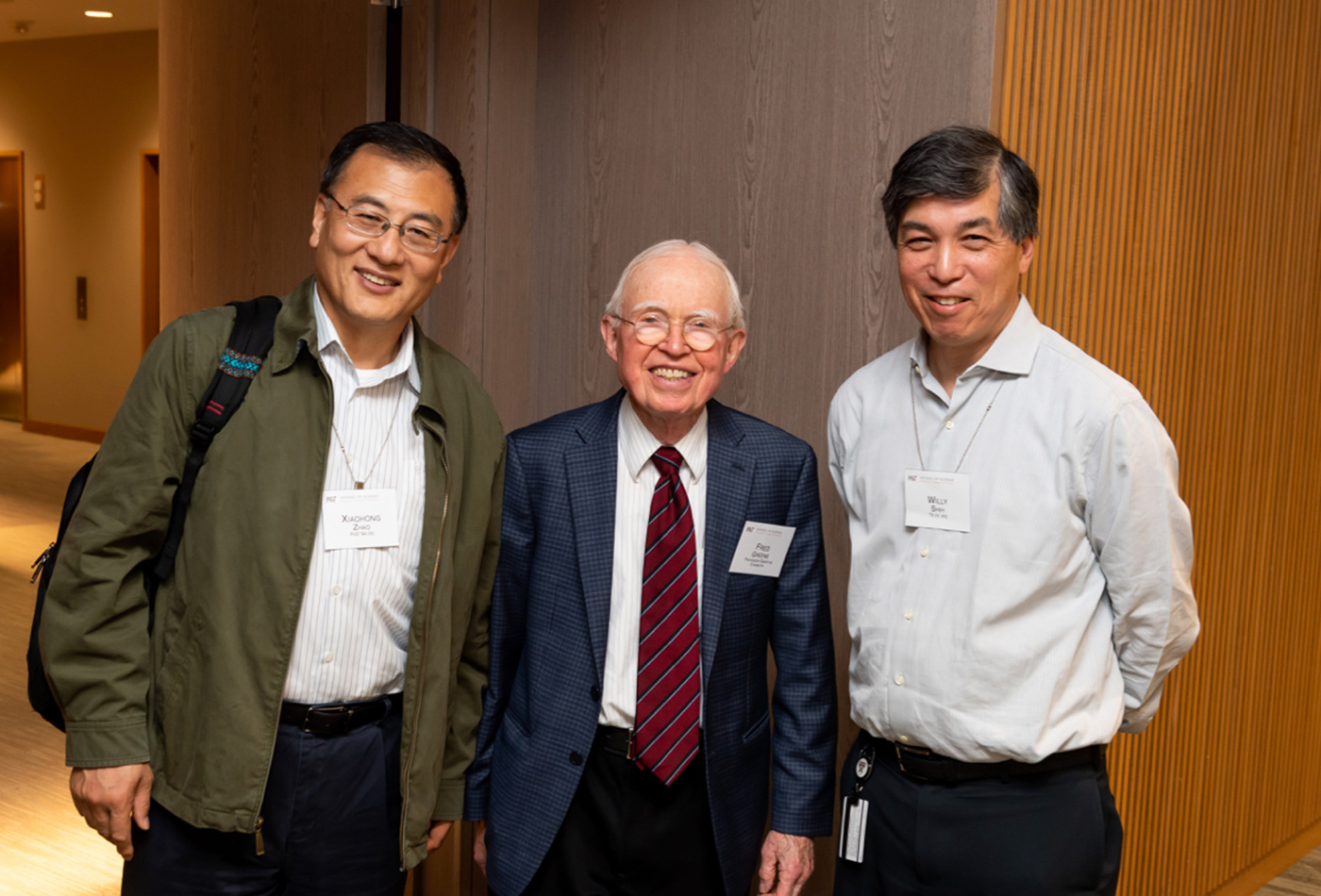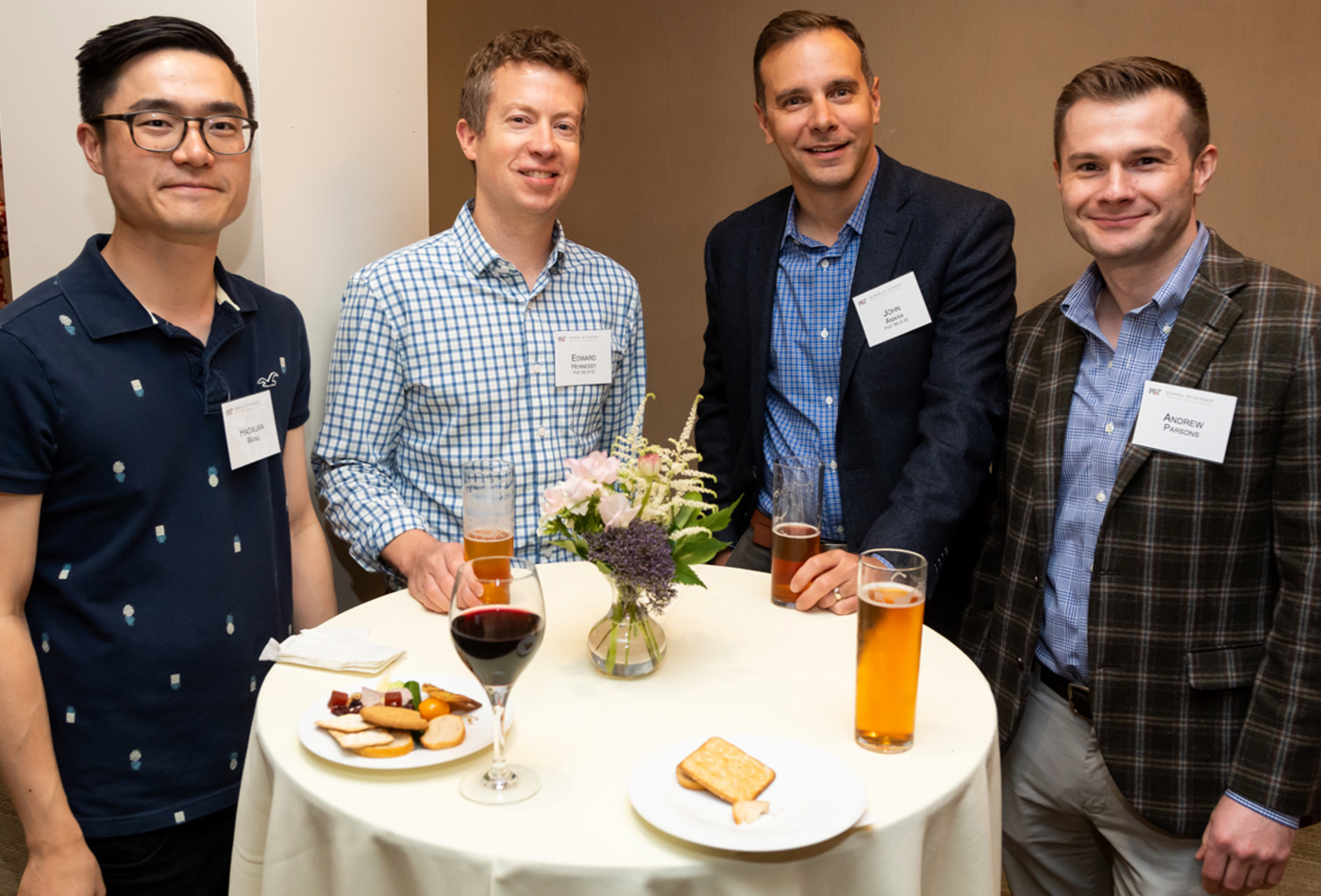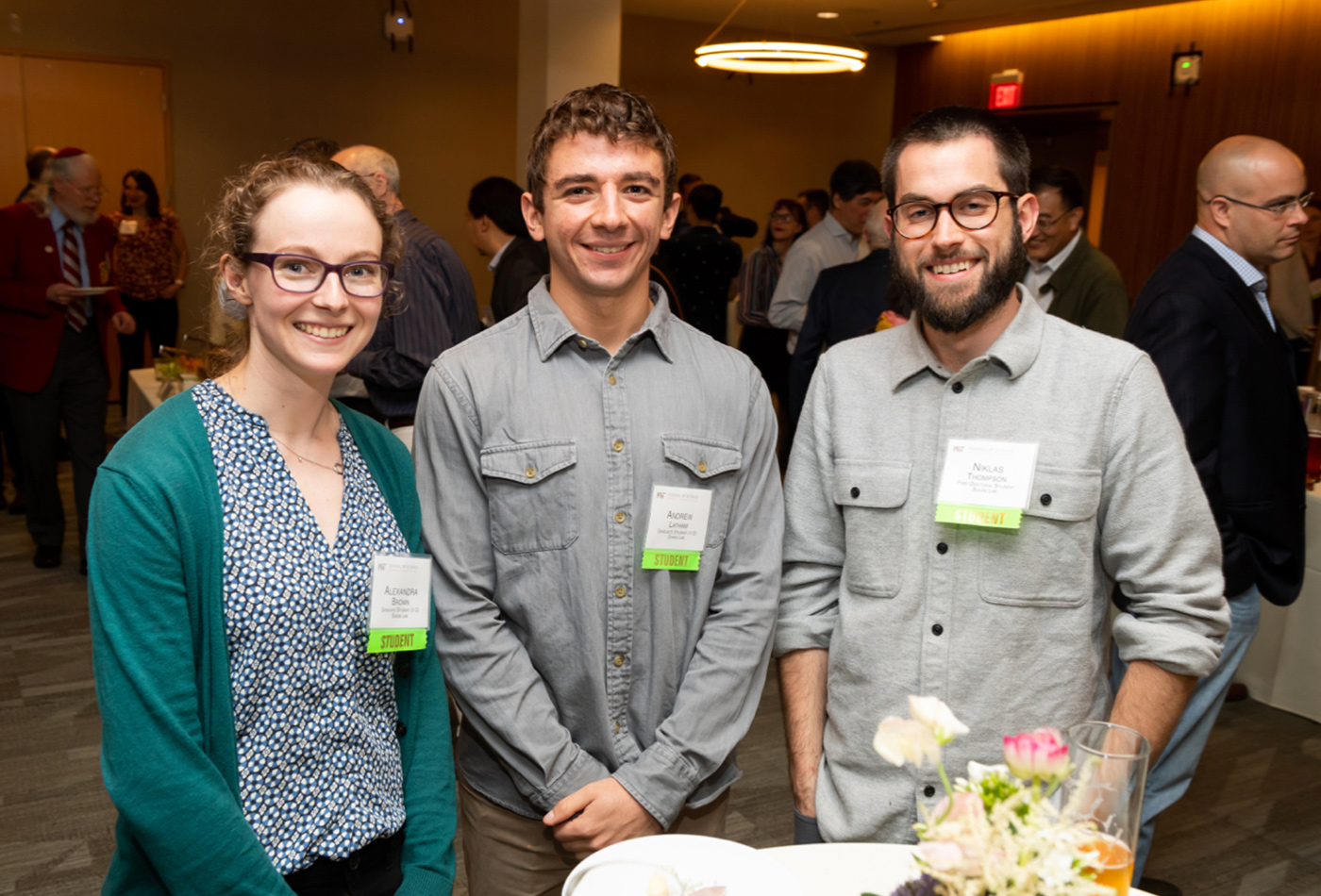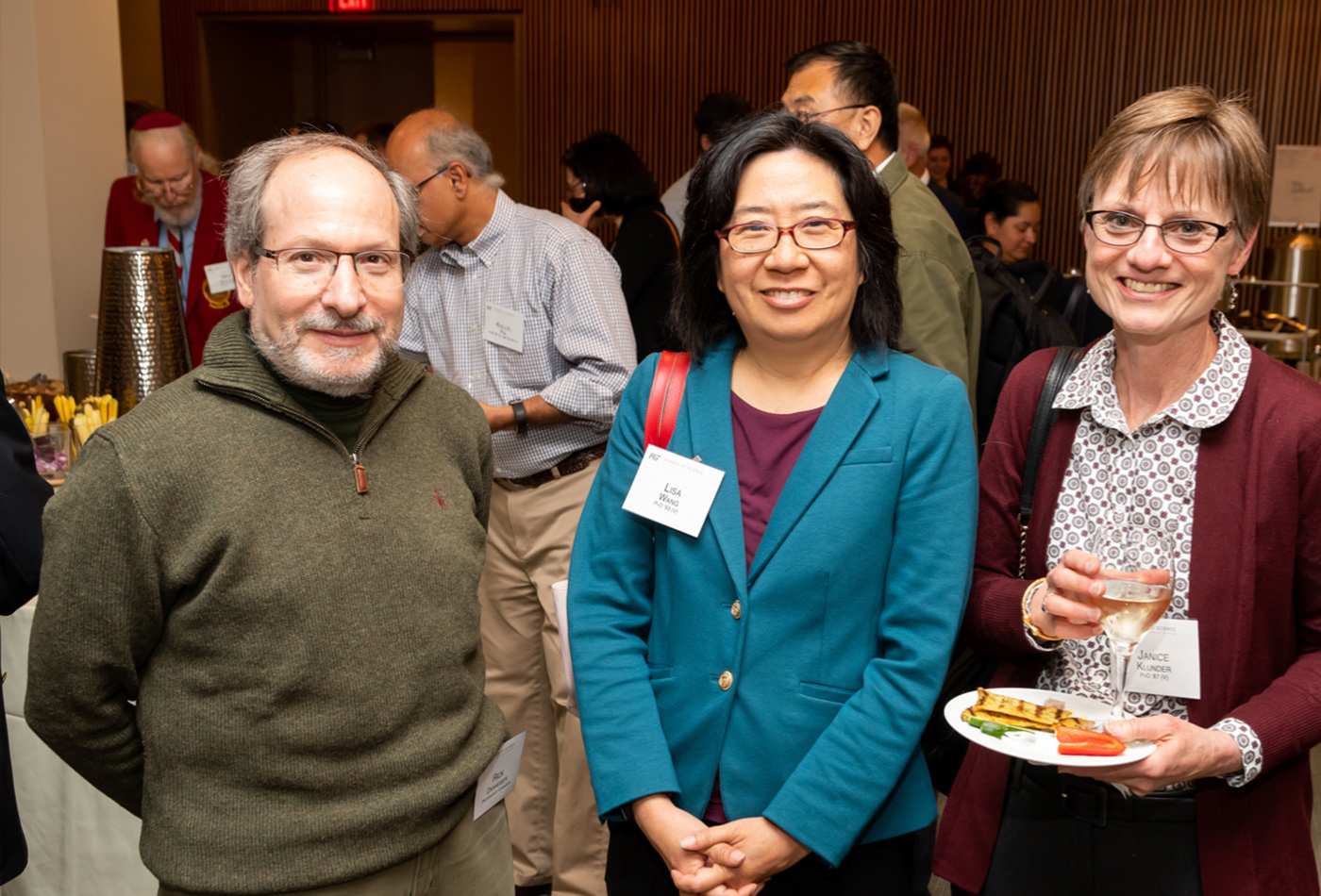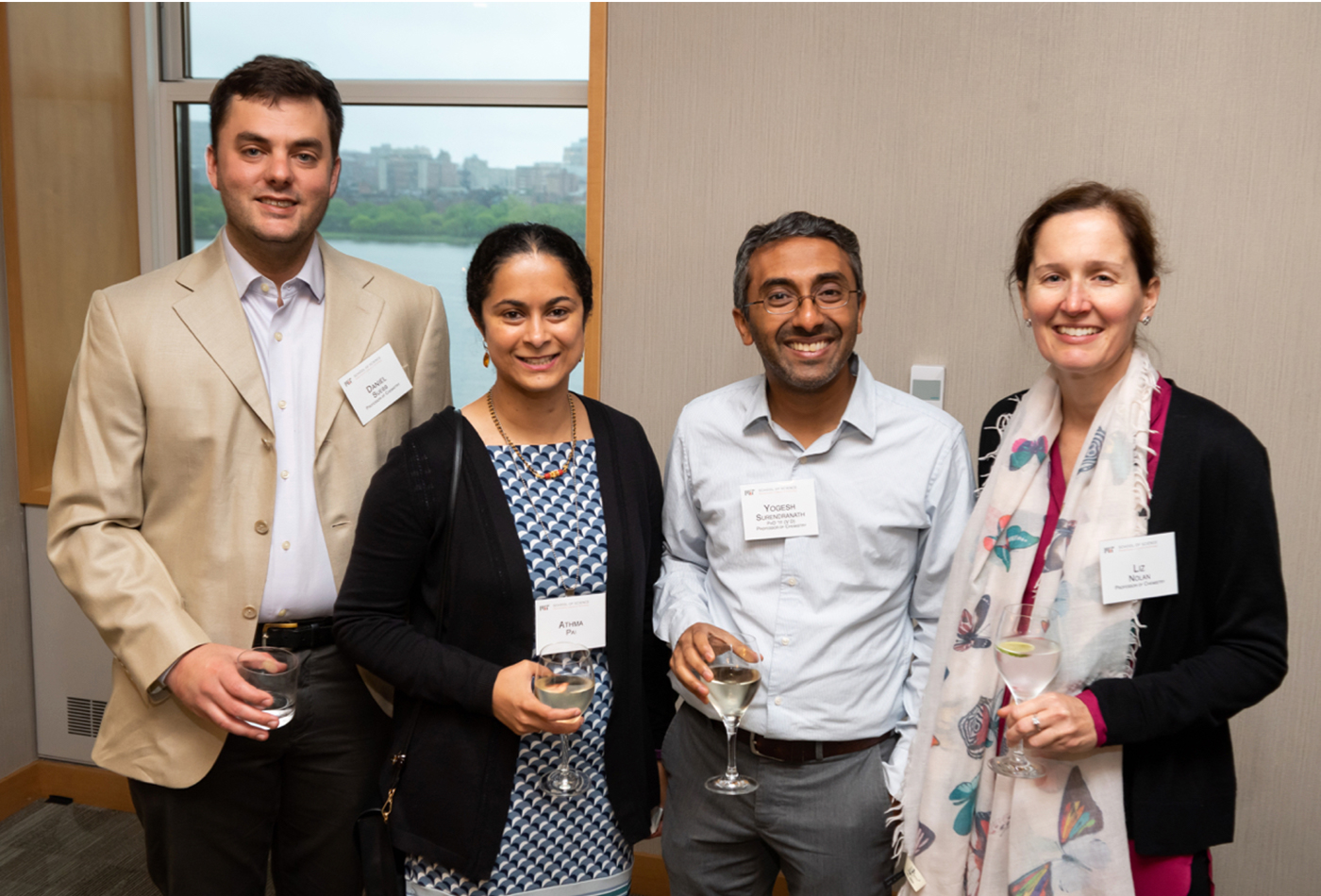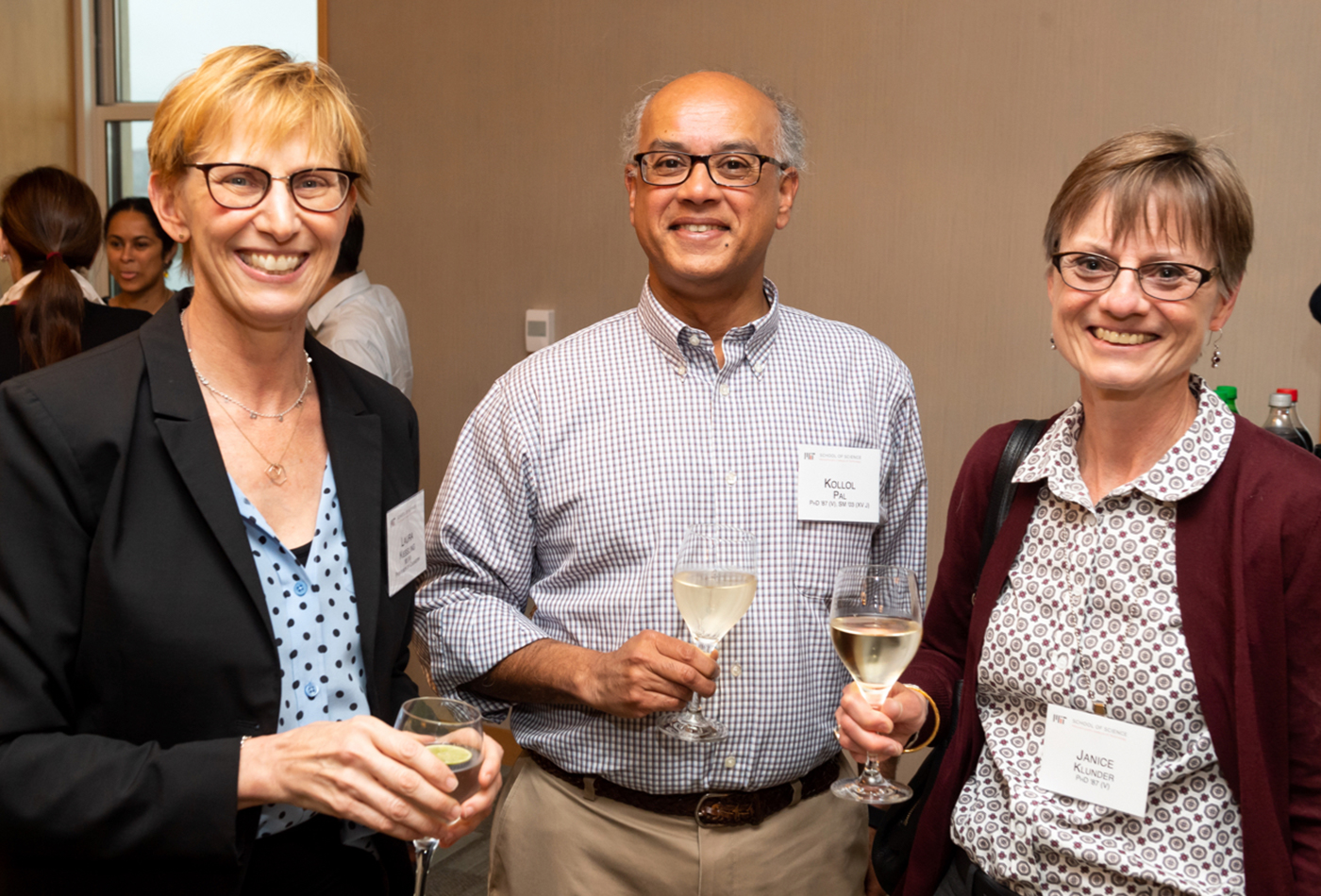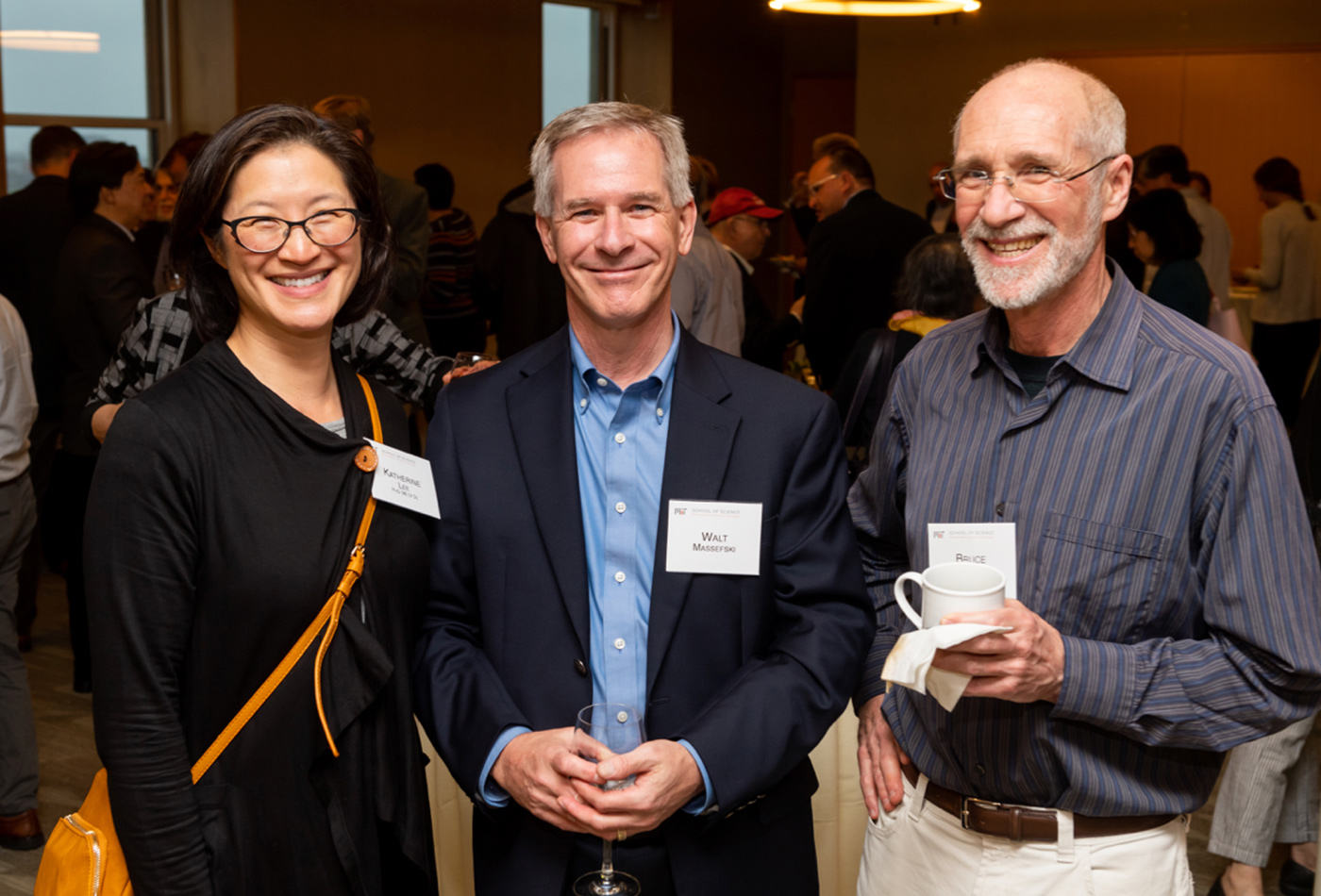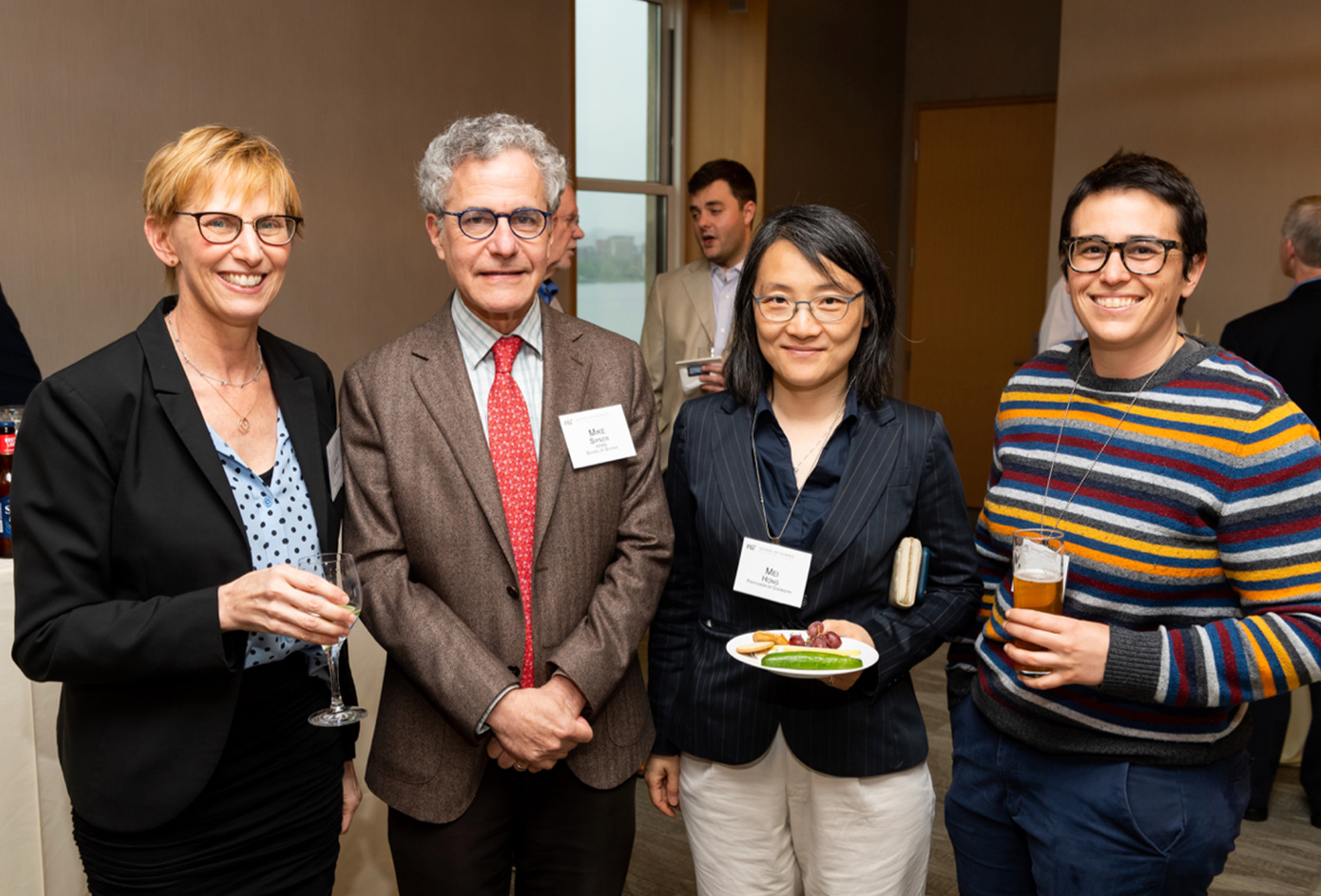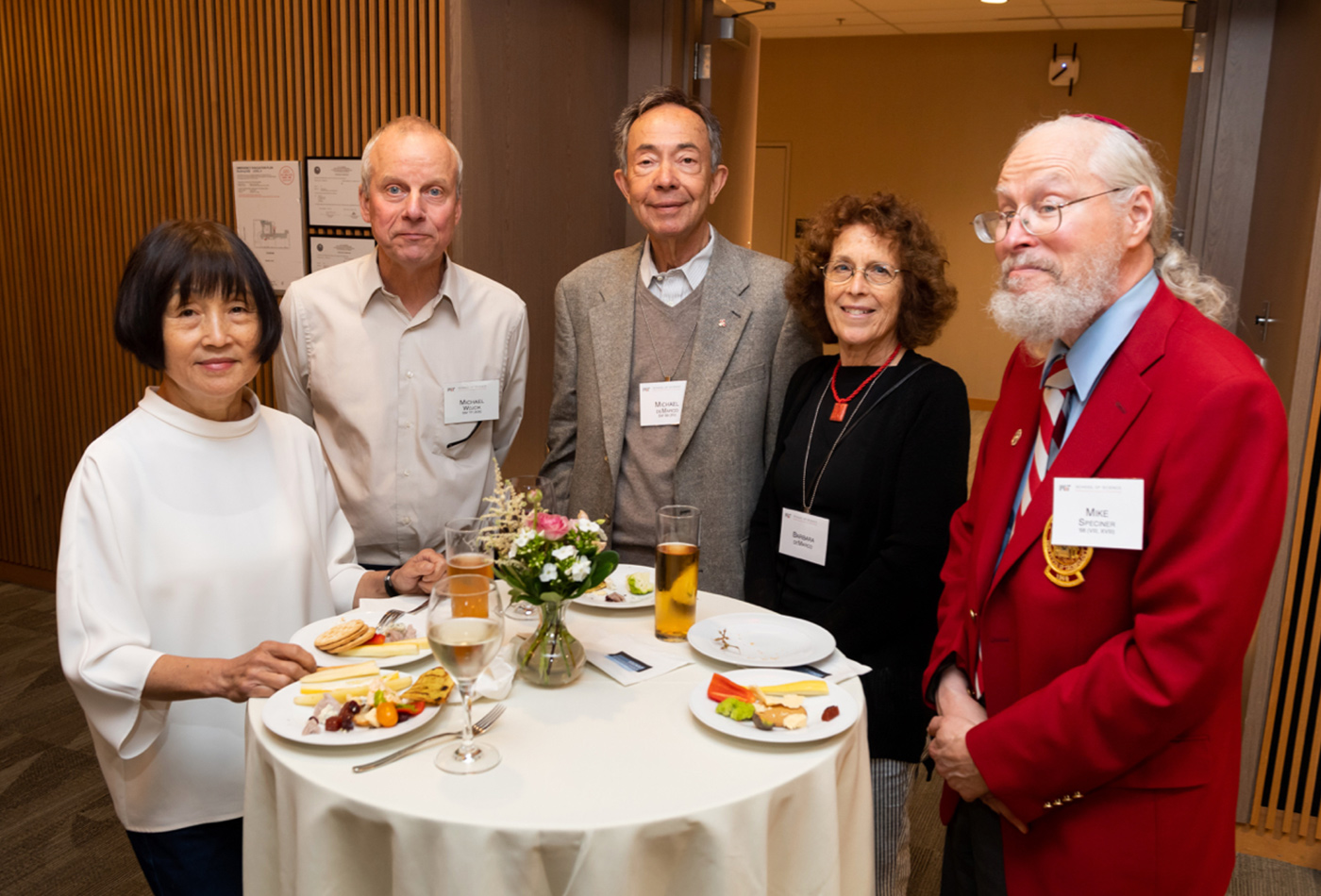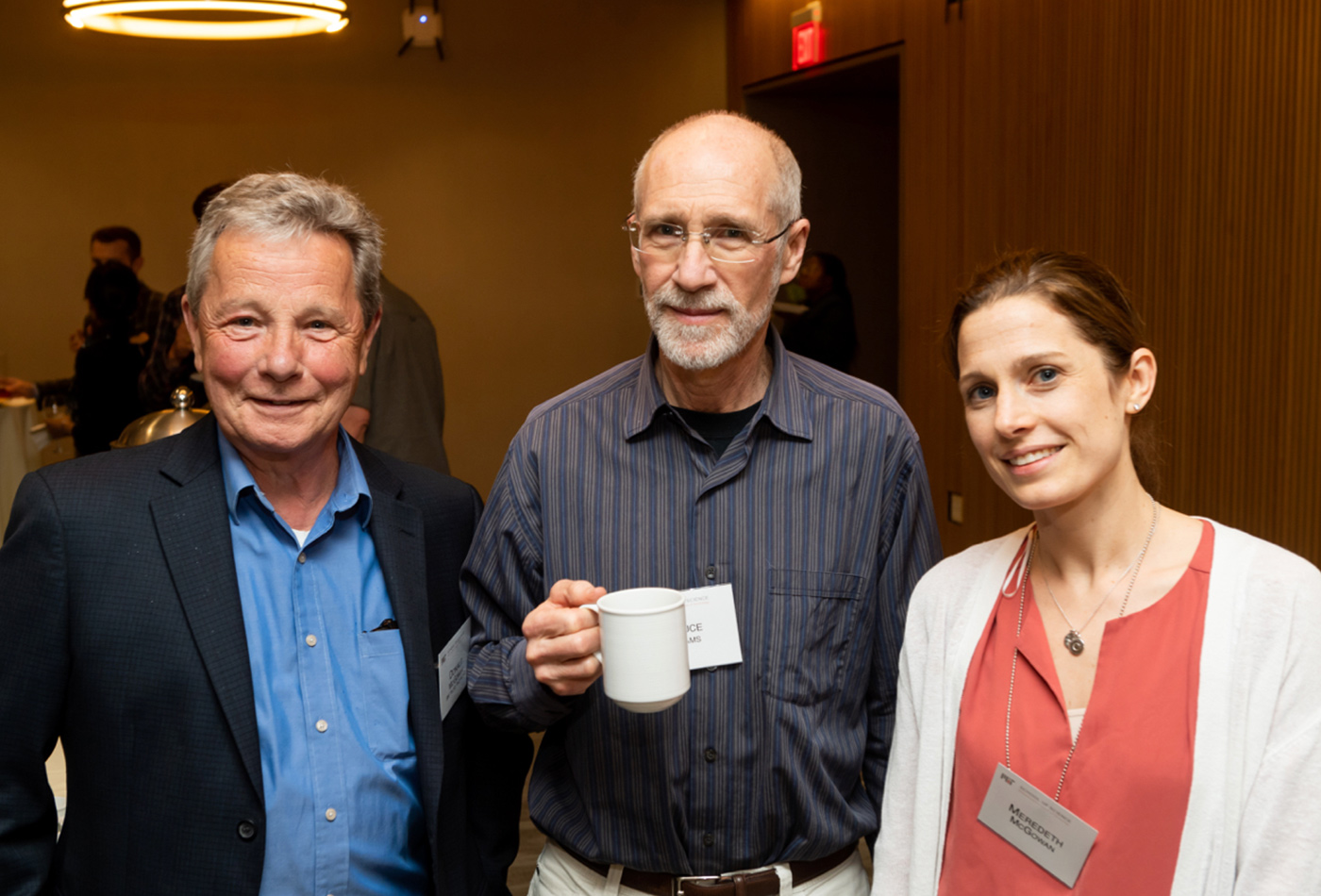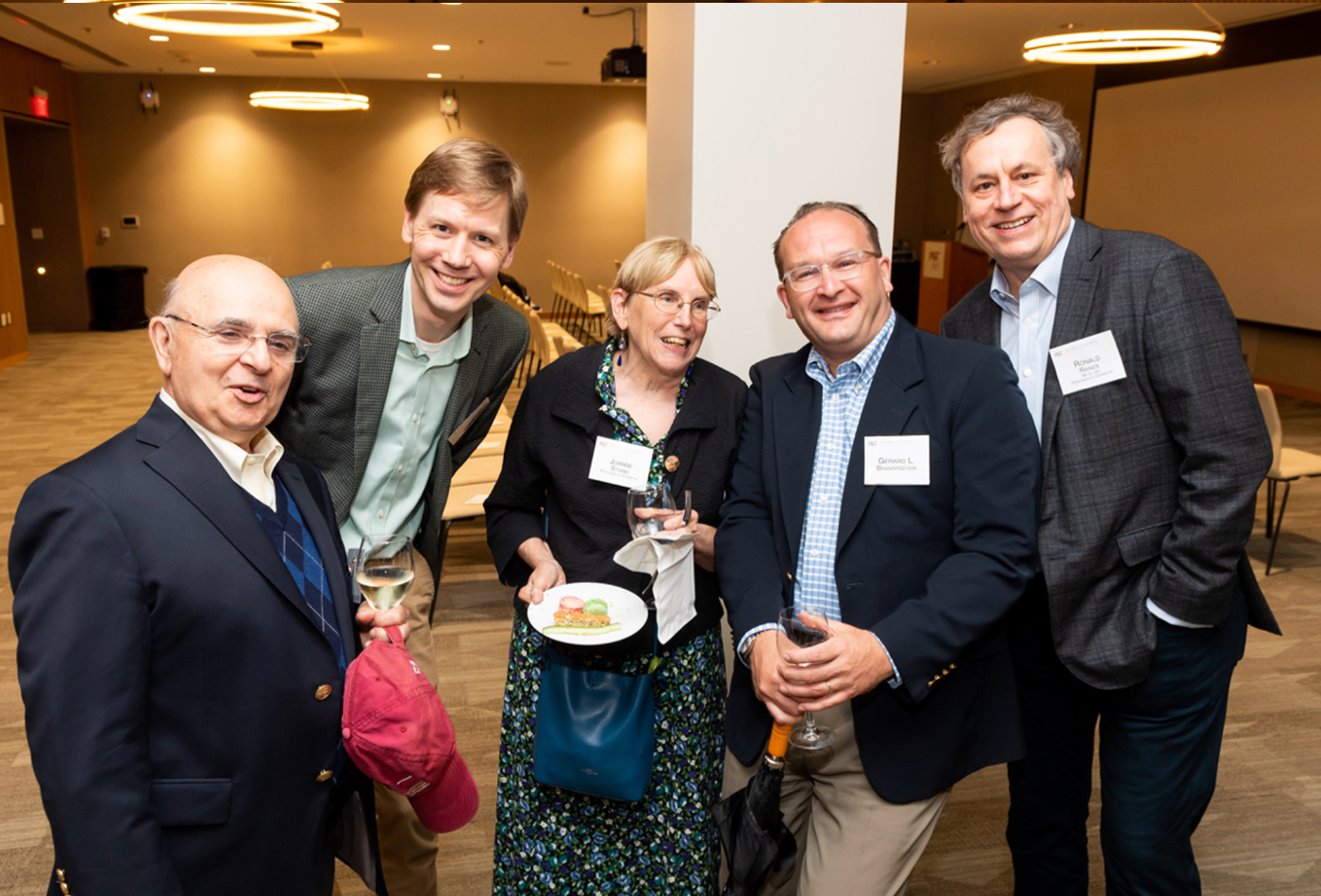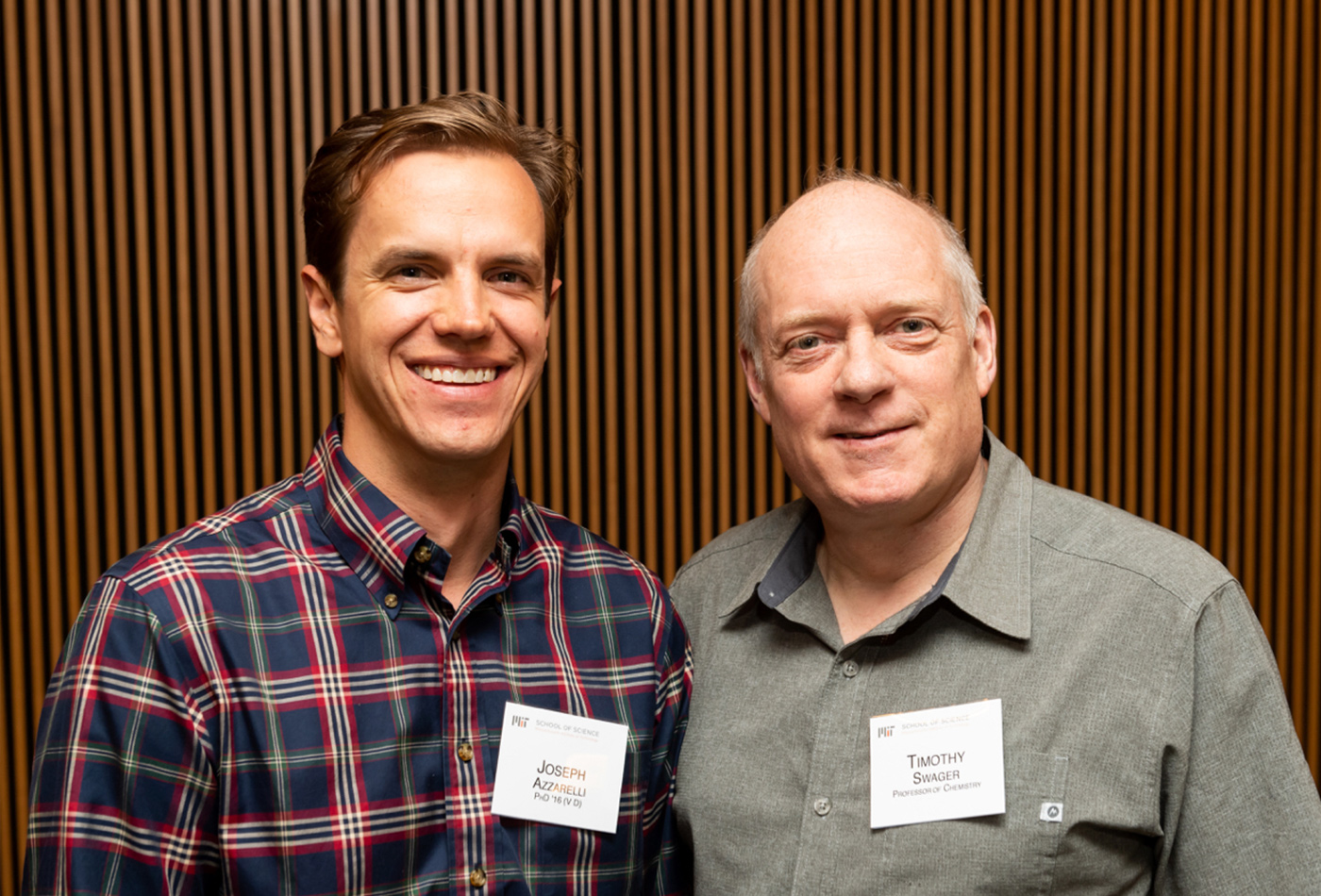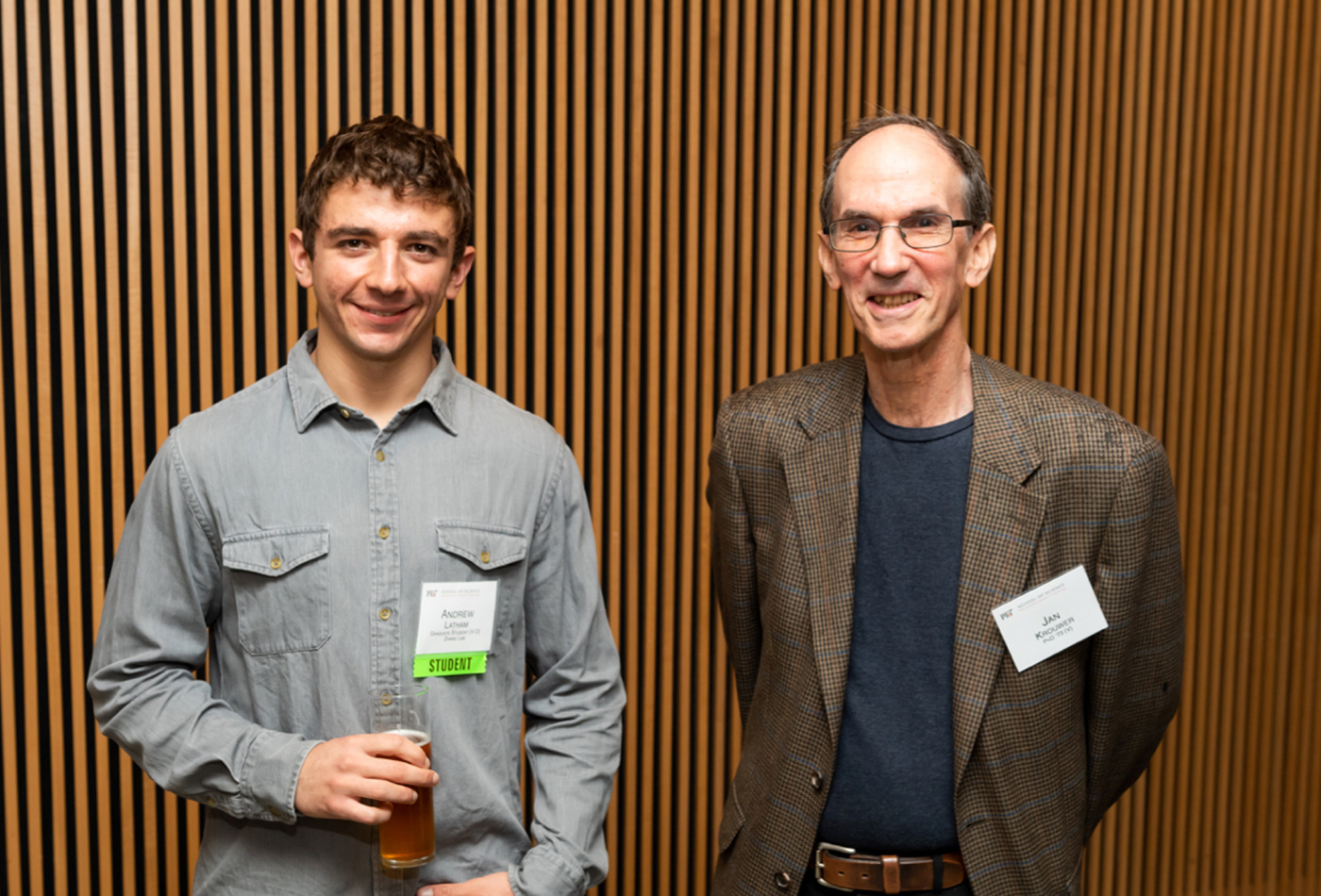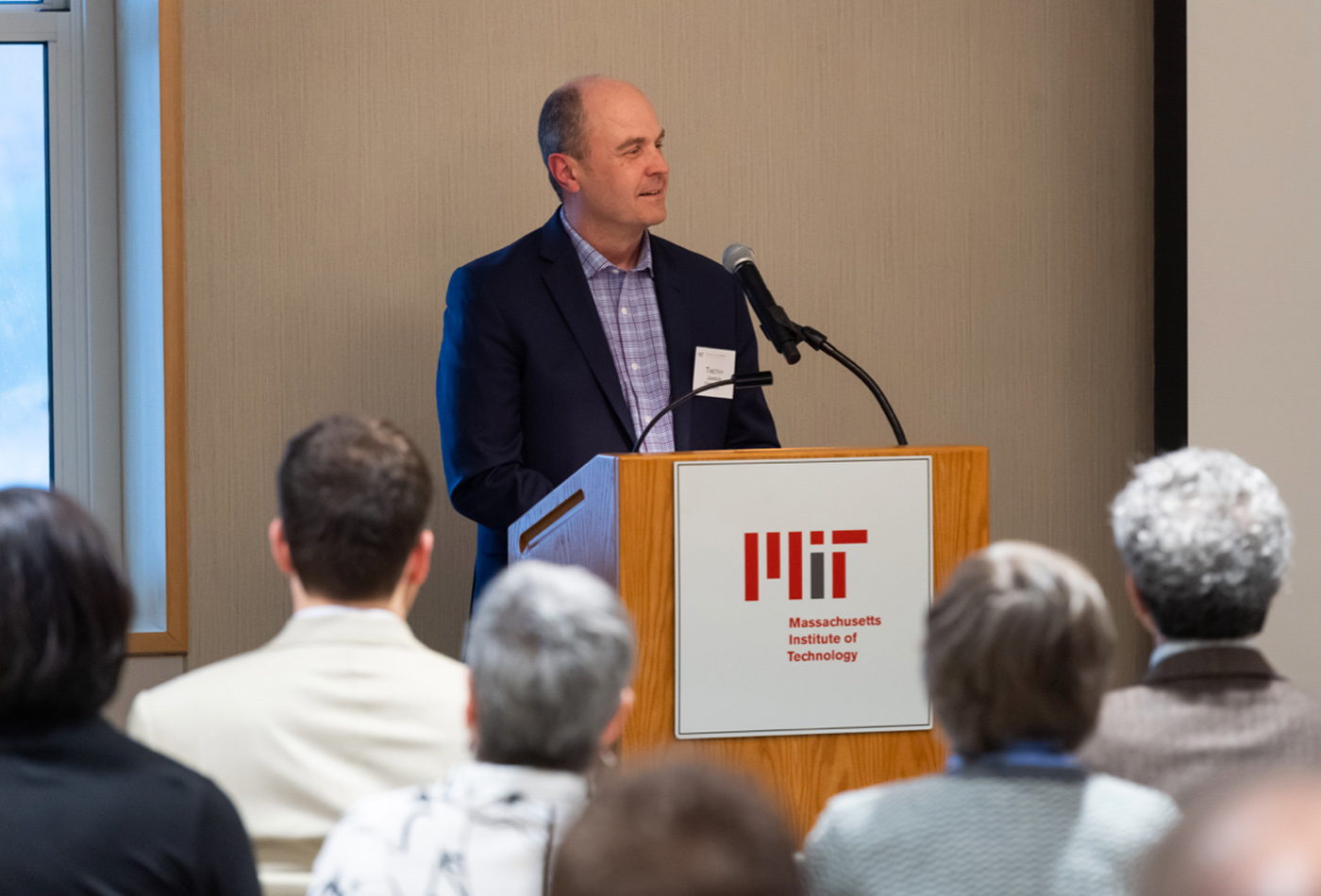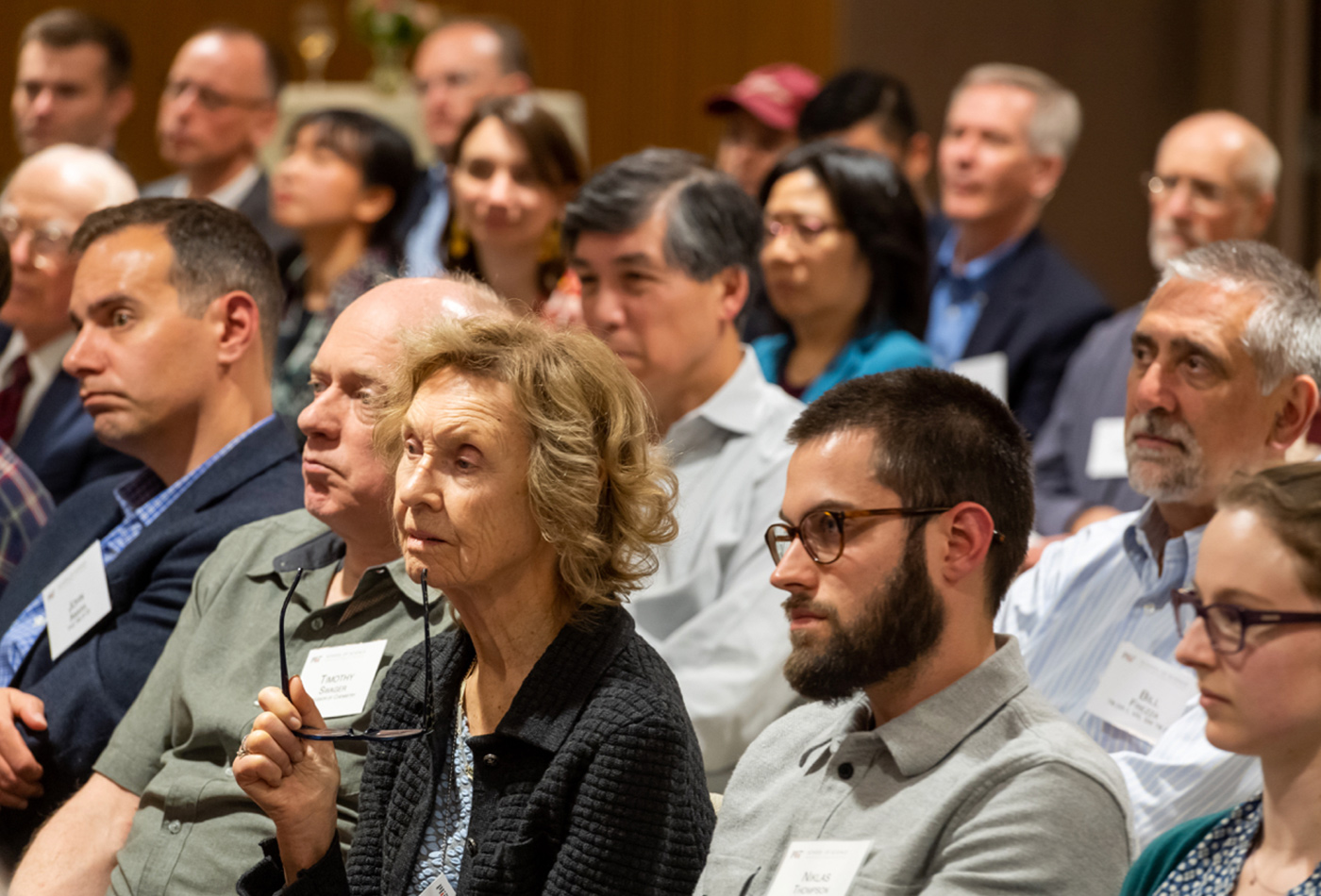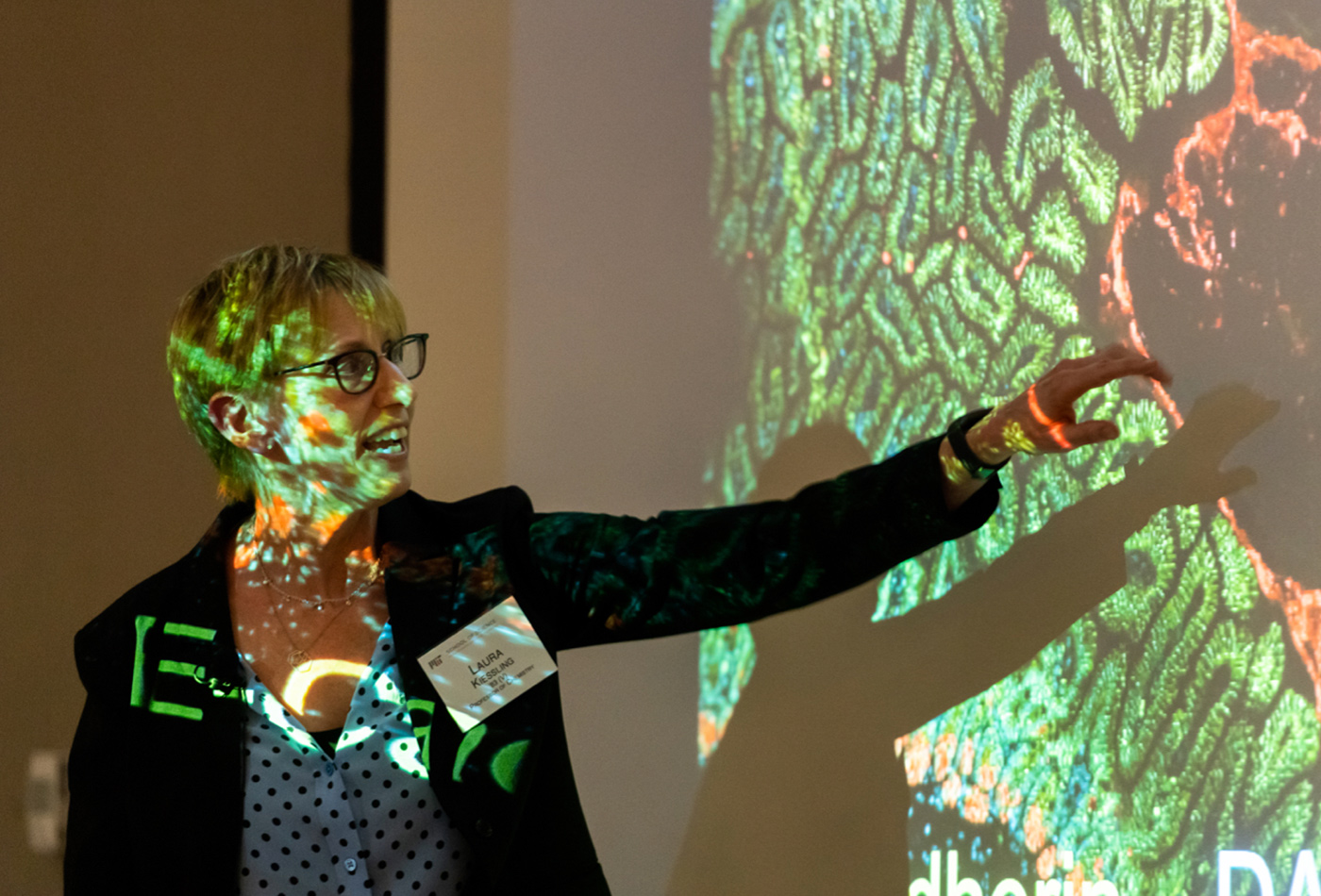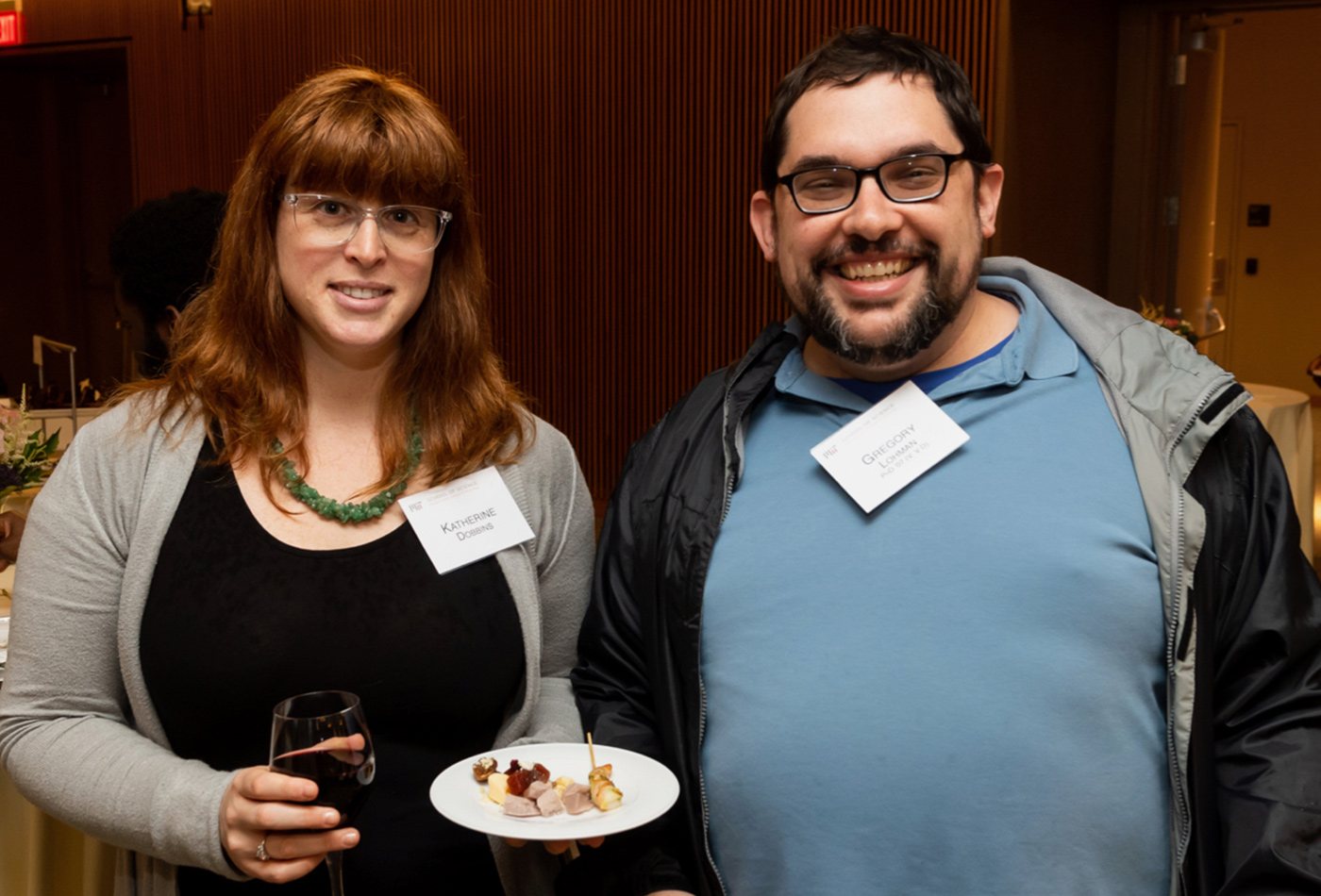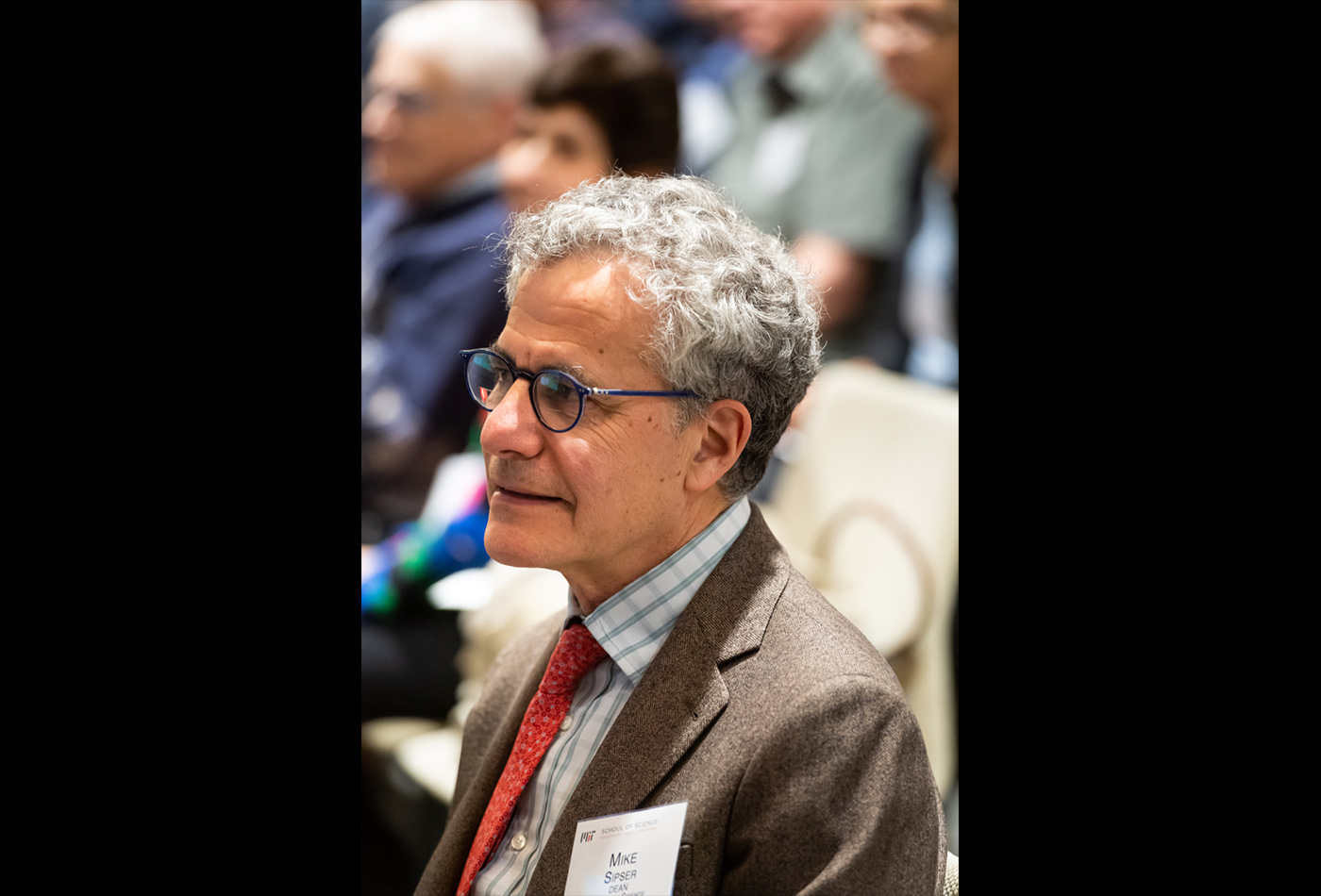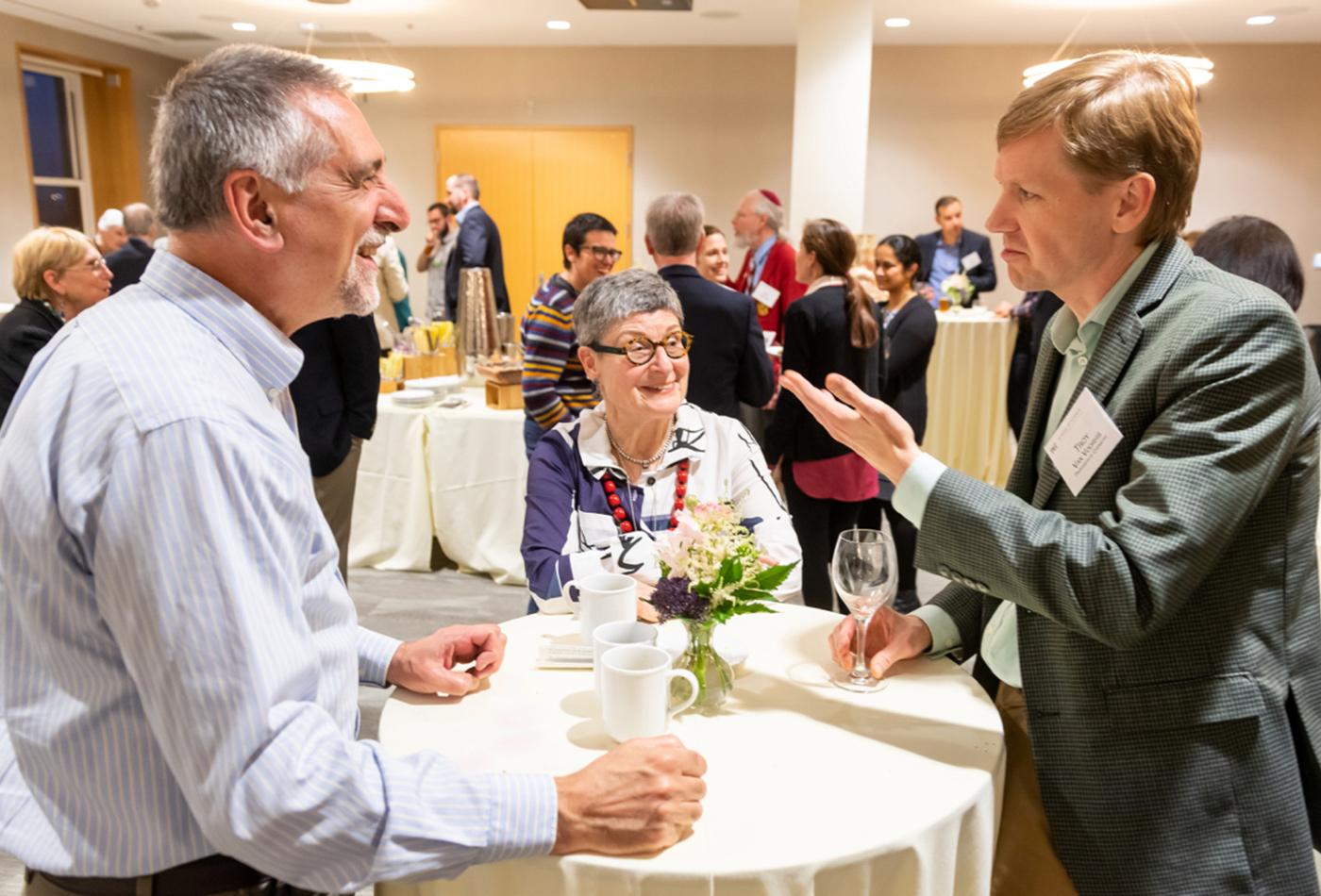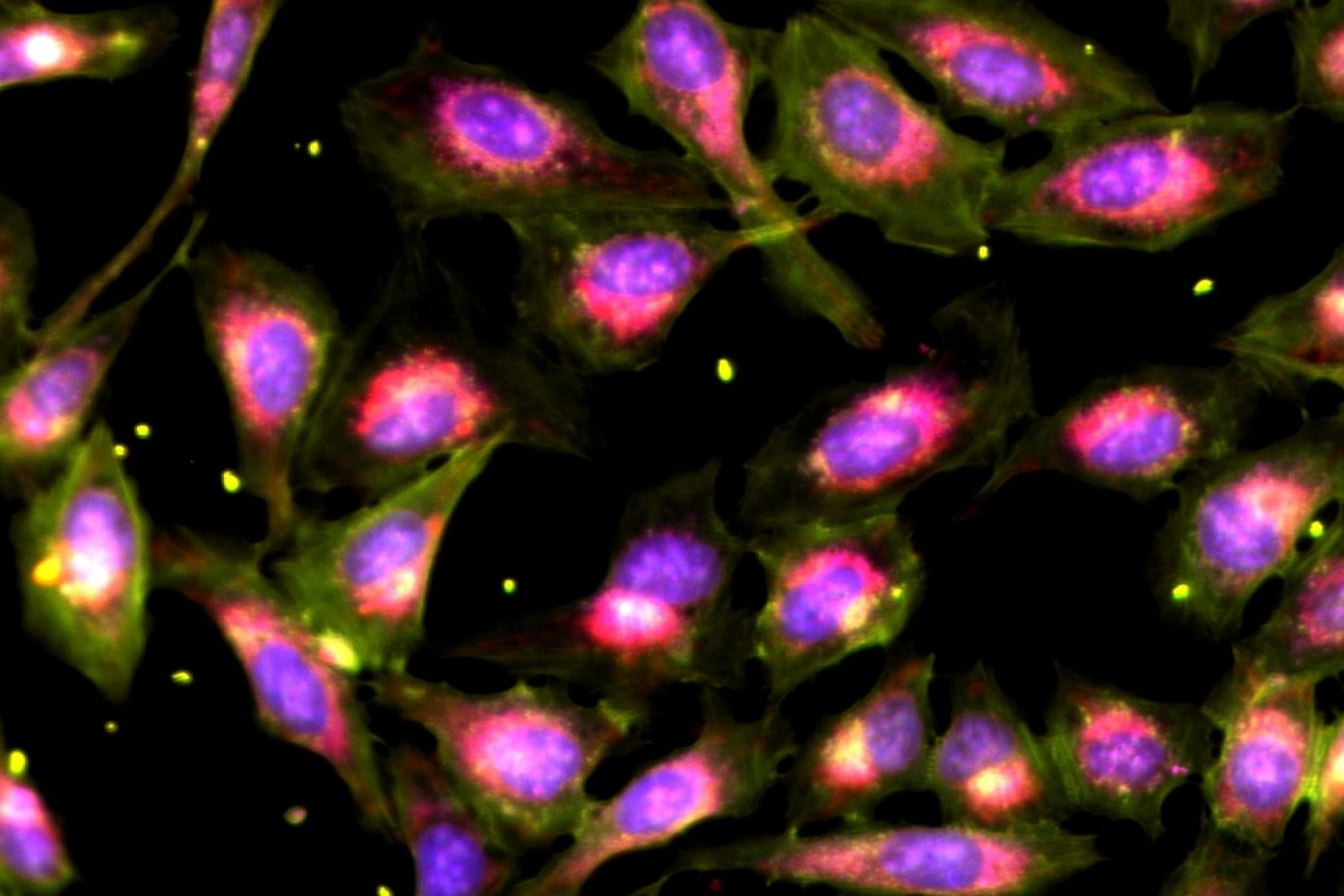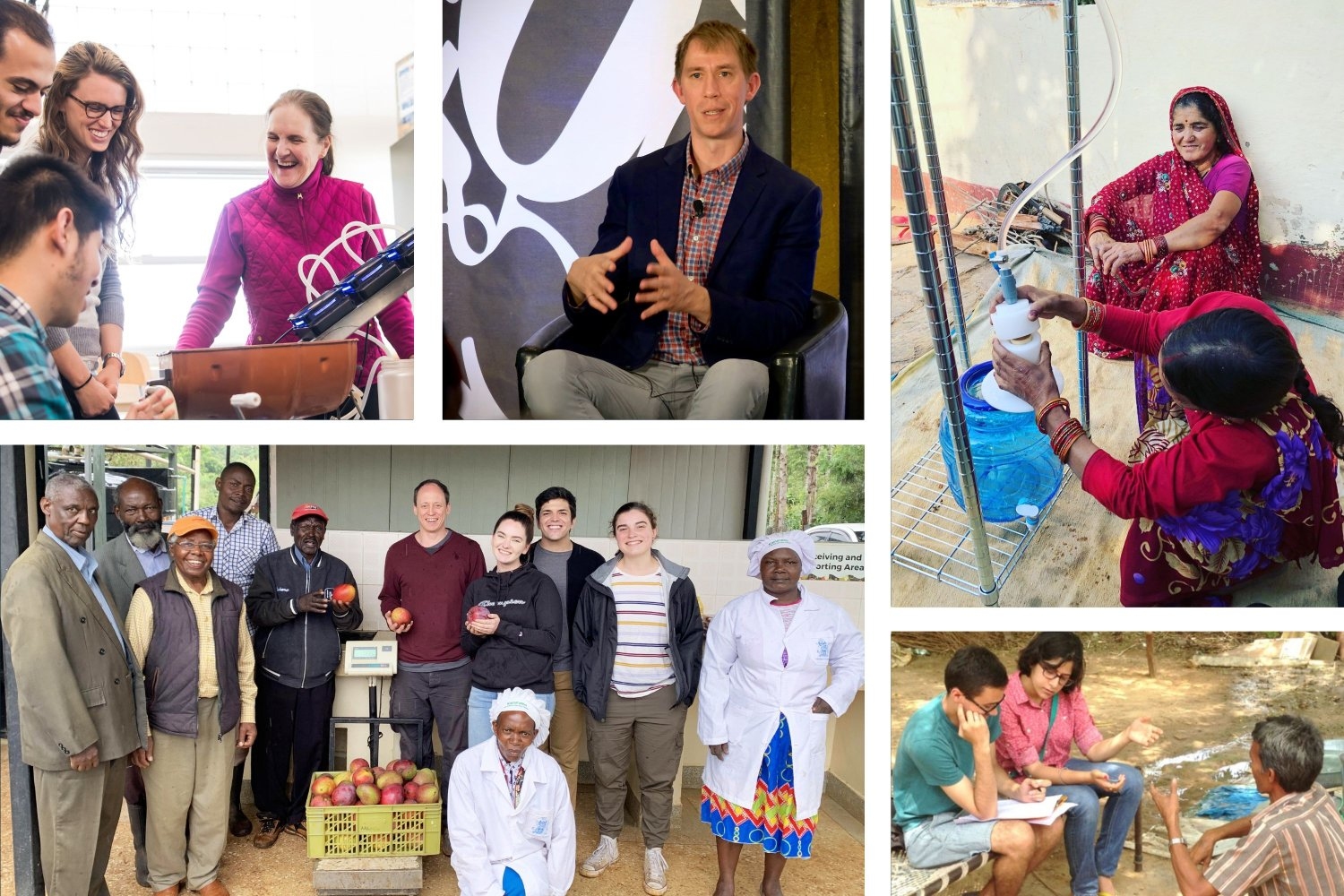Kiessling and Suess Address Chemical Science Challenges
Chemistry Alumni and Friends gathered to enjoy food, drinks, and research talks presented by Professors Laura L. Kiessling and Daniel L.M. Suess.
Novartis Professor Laura L. Kiessling and Assistant Professor Daniel L.M. Suess shared their efforts to address some of the greatest challenges currently faced by the chemical sciences at a recent Alumni and Friends reception hosted by the Department of Chemistry and the School of Science. Invited guests gathered in the Samberg Conference Center on May 28 for an evening of food, drink, and stimulating talks addressing potential chemical science solutions to current societal problems.
“Chemistry is central to addressing our most pressing challenges—securing food and fuel for future generations and improving global standards of living, all while mitigating the effects of climate change,” stated Suess. “Each of these goals relies on the development of efficient catalysts for difficult chemical transformations, and although the scientific community has now begun to undertake this work in earnest, Nature has been developing such catalysts—metalloenzymes—for billions of years.”
Understanding the most ubiquitous metalloenzymes
The Suess research group studies how enzymes with metals in their active sites have shaped the composition of the biosphere and in doing so have provided the food and fuel for the proliferation of life. The group studies the molecular-level mechanisms of these processes with a focus on elucidating the fundamental reaction chemistry and physical properties of a ubiquitous class of metalloenzymes: iron-sulfur enzymes. Current efforts include (1) developing atom-precise methods for modifying the chemical composition of enzyme-bound iron-sulfur clusters and (2) using synthetic clusters embedded in protective organic ligands as platforms for discovering and studying novel reaction chemistry.
At the Alumni and Friends event, Suess discussed his group’s studies of the mechanisms of metalloenzymes, emphasizing our efforts to elucidate the principles that underlie their remarkable reactivity and to uncover their roles in shaping the chemical composition of the biosphere. The work he presented highlighted their recent advances in understanding the chemical mechanisms of some of the most ubiquitous metalloenzymes: those that harbor iron-sulfur clusters in their active sites. Using synthetic models of these active sites, the Suess group has stabilized intermediates featuring highly reactive iron-carbon bonds—species that are difficult to study in the enzymes themselves. This work points to potential roles for such organometallic intermediates in a diverse array of processes from fuel and fertilizer production to health and disease.
“I am inspired on a daily basis by the creativity of the talented researchers with whom I get to work,” said Suess. “They really are the lifeblood of our department.”
Explaining the biological roles of carbohydrates
“Every cell has a carbohydrate coat, and we are interested in how we can recognize bacteria that live in us, or that infect us,” Kiessling explained in her presentation. “We hear a lot about the microbiome – it controls our weight, influences our health and disease in a lot of different ways, but we don’t yet have a molecular understanding. Thinking about that carbohydrate coat as an ID and the proteins that we make as the ID checkers, that’s a chemical language that is not yet understood.”
Today, research in the Kiessling group continues to focus on using chemical biology to elucidate the biological roles of carbohydrates, with an emphasis on learning new mechanistic concepts. Understanding carbohydrate function is important as all cells on Earth wear a carbohydrate coat. This carbohydrate coat, termed the glycocalyx, is poised to mediate or modulate diverse and critical biological and medical events.
Given the emerging evidence that this coat serves as a crucial conduit of information, the Kiessling group is focused on elucidating how carbohydrates are assembled, how they are recognized, and how they function. Using ideas and approaches that range from synthetic chemistry to molecular and cell biology, the Kiessling research group is addressing these issues at this frontier.
“We’re very interested in how the carbohydrate-binding proteins in us might regulate the microbiome, as well as their roles in innate immunity, immunity and preventing microbes from invading us,” said Kiessling. Figuring out how microbes make their carbohydrates is of particular importance to the Kiessling group. “If we can prevent them from making a critical carbohydrate, well, that’s a new antibiotic!”
Celebrating Chemical Science
Department Head Timothy F. Jamison stated that the Department of Chemistry was pleased to co-host its fourth annual Alumni and Friends reception with the School of Science. As in years past, this event proved to be an excellent opportunity to showcase a sampling of the revolutionary work being conducted within the halls of the Department of Chemistry and, further still, the MIT campus as a whole.


